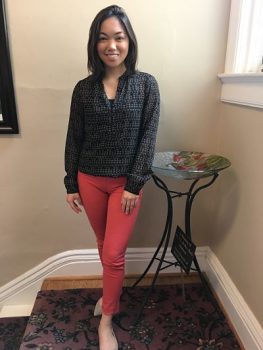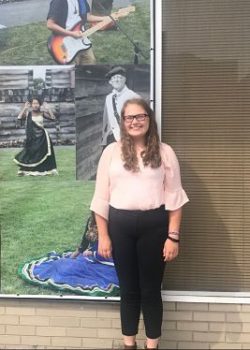Submitted by Abigail Kelly ’21, one of 30 students doing community-based research this summer as a Fellow in the Upstate Institute Summer Field School

This summer, I had the opportunity to work with BRiDGES, the Madison County Council on Alcoholism & Substance Abuse through the Upstate Institute Summer Field School. BRiDGES is a nonprofit organization that focuses on providing services to people struggling with substance use and inspiring change and hope in the community. Within BRiDGES, there are several different programs that target different aspects and forms of substance use. These programs include Advancing Tobacco-Free Communities (ATFC), Stop DWI, the Employee Assistance Program, an LGBTQIA youth program, and more. The all-female staff who work for BRiDGES are all passionate about the work they do and all work together to move their programs forward in the best interest of the populations they collectively serve. BRiDGES has been serving Madison County for 32 years and continues to garner respect in the community.
One of the newer programs at BRiDGES is the Central Region Addiction Resource Center (CRARC). The CRARC, run by Lauren Davie, is part of a state-wide program of regional addiction resource centers funded and monitored by the NYS Office of Alcoholism and Substance Abuse Services (OASAS). The central region includes five counties: Onondaga, Cayuga, Madison, Oswego, and Cortland. The CRARC serves these counties by helping people who may be struggling to find and connect with regional addiction services. The efforts of the CRARC include community Narcan training, tabling at local events, a comprehensive app listing local addiction resources and more. These efforts rely heavily on connections and collaboration with other regional leaders. BRiDGES as a whole is in constant contact and collaboration with other organizations within and outside Madison County. The women who work for BRiDGES serve on multiple coalitions, attend local nonprofit meetings, and are involved with county-wide task forces. Due to the small size of the organization, collaborating allows the scope of BRiDGES’ efforts to multiply and extend beyond the capacity of the actual employees. Serving a rural area in terms of public health invites challenges that are different than the challenges faced in urban areas. Community attitudes are often resistant to change and thus creating positive change in a rural community is difficult and takes substantial time and effort. Efforts to unify community leaders through coalitions and task forces are invaluable in rural public health.
For my specific project this summer, I worked on conducting a needs assessment in an effort to prepare BRiDGES for applying for a new grant this year. The new grant targets rural populations, providing funding for these communities to increase their prevention, treatment, and recovery services for opioid addiction. I worked through the grant and determined which of their recommended “core activities” Madison County has and which areas are lacking. I am now in the process of creating surveys for service providers in the county to determine which activities they’re actually doing as well as to get a pulse on provider attitudes and beliefs surrounding opioid addiction. In addition to the needs assessment project, I am working with Lauren and the CRARC creating marketing content for community events and doing research for a harm reduction conference that we are planning for the fall. Hopefully, this conference will bring together regional providers and help facilitate the chipping away of the stigma surrounding people who suffer from Opioid Use Disorder.
As a neuroscience major with an art minor, I love the classes I take but I’ve struggled to put my finger on what I’m interested in doing in the future. This spring, I applied to the Upstate Institute summer field school program because I knew I was at least mildly interested in public health and I thought that getting some real-world experience would help me decide if I want to be doing something like this in the future. While I still don’t know for sure if I want to be working at a job like this, I do know that working with BRiDGES has been leagues more valuable for me than I ever thought it would. Stepping outside the Colgate bubble and taking a moment to learn about the struggles of the community in which I (temporarily) live has been incredibly powerful. I feel very lucky to have been given the opportunity to give back to the community that is hosting me for my 4 years in college. I will be staying on as an employee of BRiDGES for the fall semester (and beyond!), and I cannot wait to continue to learn, grow, and give back with this incredible agency.





